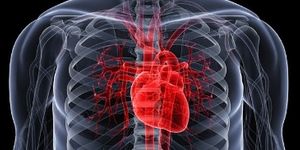
Firefighters and rescue workers who conducted the rescue and cleanup operations at Ground Zero from September 2001 to May 2002 was exposed to hazardous airborne particles that led to a disturbing "WTC cough" - obstructed airways and inflammatory bronchial hyperactivity - and acute inflammation of the lungs. At the time, bronchoscopy, the insertion of a fiber optic bronchoscope into the lung, was the only way to obtain lung samples, but this method is highly invasive and impractical for screening large populations.
That motivated Prof. Elizabeth Fireman of Tel Aviv University's Sackler Faculty of Medicine and the Institute for Pulmonary and Allergic Diseases at TAU-affiliated Tel Aviv Sourasky Medical Center to experiment with a new technique: Induced Sputum (IS). In IS hypertonic saline is inhaled to produce a mucus expectorate that can be tested for hazardous particles. She flew to Ground Zero and tested 39 New York City firefighters using the IS biomonitoring method and then compared these results against a control group of Israeli firefighters. Her technique identified very dangerous metals, such as mercury, in the rescue workers' lungs.
Now, in a new study published in the International Archives of Occupational and Environmental Health, Prof. Fireman and a team of researchers at Tel Aviv Sourasky Medical Center examine the benefits of using the IS technique to assess the effect of pollution on urban asthmatic children. The study reveals that environmental sampling stations located in cities around the world are not sufficient to protect the health of these children.
"After our last study on occupational exposure, I decided to examine the most vulnerable sector in the field of asthma - children," said Prof. Fireman. "Environmental monitoring systems are only capable of measuring large particle matter, which is mostly expelled by the lungs. I wanted to know what happened to the small particle matter capable of evading the body's immunological mechanisms, and I wanted to know how they affected asthmatic kids."
For the purposes of the study, Prof. Fireman's team recruited 136 children from two to twelve years of age who had already been referred for asthmatic evaluations to Tel Aviv Sourasky Medical Center. Their parents completed a clinical and demographic International Study of Asthma and Allergy in Childhood (ISAAC)-based questionnaire that included passive smoking status, known present and past diseases, and respiratory symptoms. Afterward, all of the children underwent IS testing in order to detect and measure particulate matter in their lungs.
In the course of the IS testing, the children inhaled 3 percent nebulized material for up to twenty minutes through an ultrasonic nebulizer, which harnesses mist to administer medication.
"We compared our results with the indices published by rooftop pollution stations in Tel Aviv," said Prof. Fireman. "And while we do not discount the importance of maintaining such environmental stations, we found their measurements to be at odds with our own findings, suggesting they cannot be used as the sole measurement of pollution levels."
While further studies are necessary to investigate the practicality and feasibility of using IS to assess large populations, Prof. Fireman is confident her findings demonstrate the capability of IS to biologically monitor the accumulation of airborne particles in the lungs of children with asthma.
"Most important, perhaps, we have found that environmental monitoring is not enough. You need a biomonitoring technique, like IS, which is a more physiologically sensitive," said Prof. Fireman. "This study suggests that we are not well protected by environmental stations. To help parents determine whether they should continue to live with their children in polluted areas, we will need to combine our strategies."
 Firefighters and rescue workers who conducted the rescue and cleanup operations at Ground Zero from September 2001 to May 2002 was exposed to hazardous airborne particles that led to a disturbing "WTC cough" - obstructed airways and inflammatory bronchial hyperactivity - and acute inflammation of the lungs. At the time, bronchoscopy, the insertion of a fiber optic bronchoscope into the lung, was the only way to obtain lung samples, but this method is highly invasive and impractical for screening large populations.
Firefighters and rescue workers who conducted the rescue and cleanup operations at Ground Zero from September 2001 to May 2002 was exposed to hazardous airborne particles that led to a disturbing "WTC cough" - obstructed airways and inflammatory bronchial hyperactivity - and acute inflammation of the lungs. At the time, bronchoscopy, the insertion of a fiber optic bronchoscope into the lung, was the only way to obtain lung samples, but this method is highly invasive and impractical for screening large populations.







